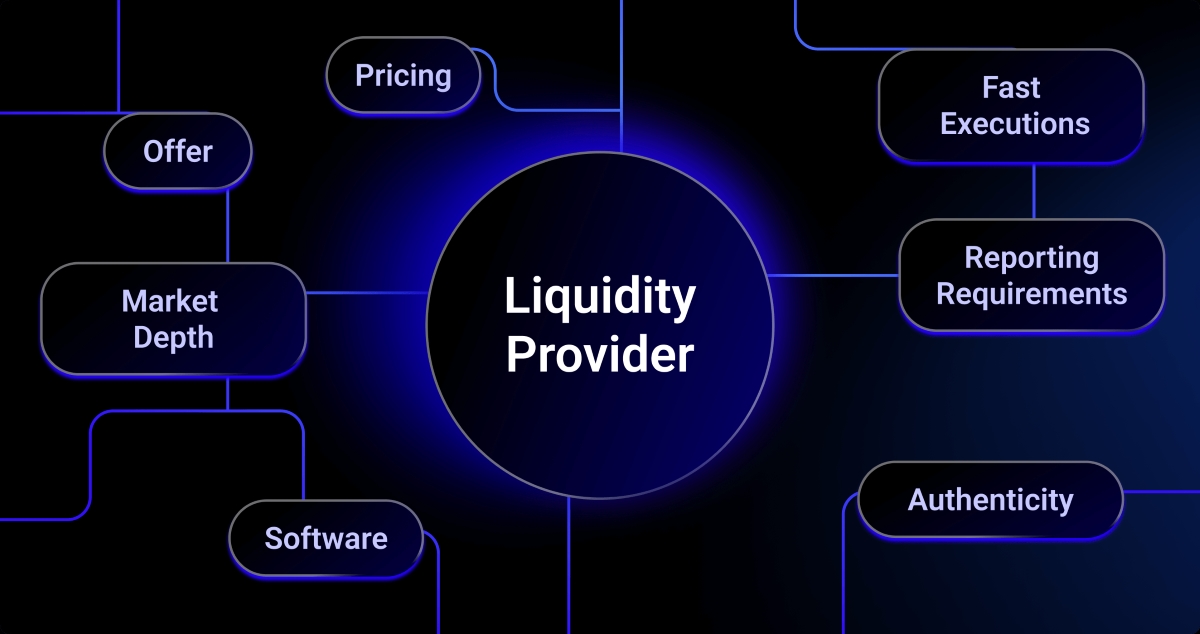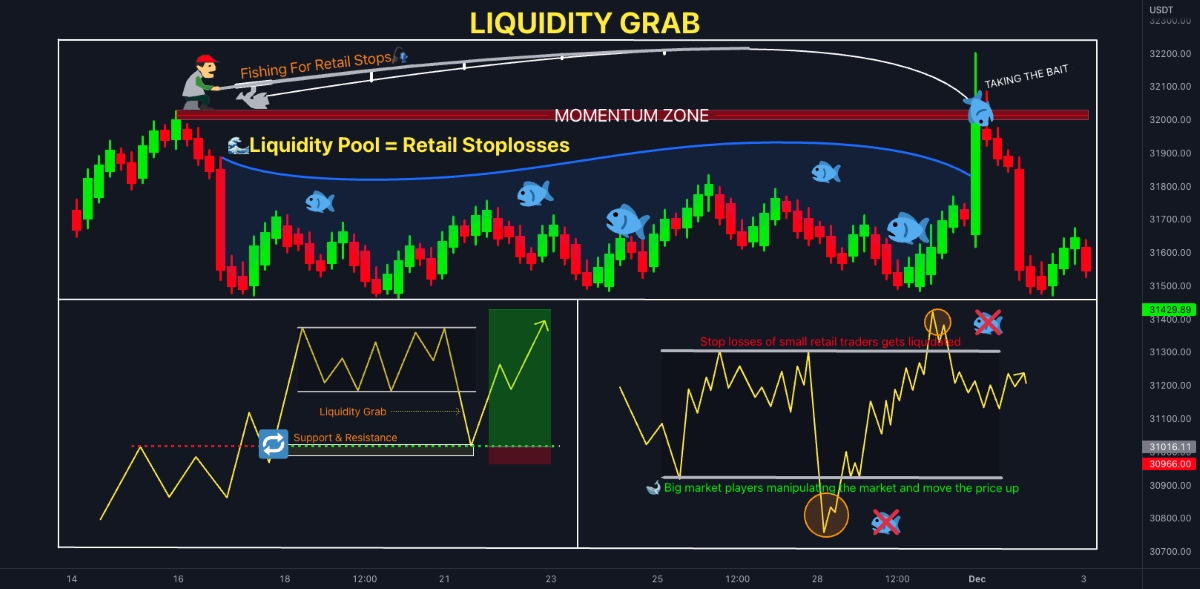

Finance
What Is A Liquidity Provider?
Published: February 23, 2024
Looking for a finance liquidity provider? Learn about the role of liquidity providers in finance and how they contribute to market efficiency and stability. Discover the benefits of partnering with a liquidity provider for your financial needs.
(Many of the links in this article redirect to a specific reviewed product. Your purchase of these products through affiliate links helps to generate commission for LiveWell, at no extra cost. Learn more)
Table of Contents
Introduction
Introduction
When it comes to the world of finance, the term “liquidity provider” holds significant weight. Whether you are an investor, trader, or financial institution, understanding the role and impact of liquidity providers is crucial. In this article, we will delve into the depths of liquidity provision, unraveling its definition, role, types, and the myriad benefits it offers to the financial landscape.
Imagine a bustling marketplace where buyers and sellers converge to engage in transactions. In this scenario, liquidity providers act as the facilitators, ensuring that the market functions smoothly by offering ample liquidity, enabling seamless buying and selling activities. This pivotal role makes liquidity providers indispensable in the financial realm, influencing the efficiency and stability of various markets.
As we embark on this exploration of liquidity providers, we will uncover the intricacies of their operations, shedding light on the diverse forms they can take and the advantages they bring to the table. By the end of this journey, you will have a comprehensive understanding of the vital role liquidity providers play in the financial ecosystem and the benefits they bestow upon market participants.
Definition of Liquidity Provider
A liquidity provider, in the realm of finance, is an individual or entity that plays a fundamental role in maintaining the stability and efficiency of financial markets. Essentially, liquidity providers serve as the cornerstone of market liquidity, ensuring that there is a continuous flow of buy and sell orders for various financial instruments, such as stocks, bonds, currencies, and derivatives. By standing ready to execute trades at all times, liquidity providers bolster the smooth functioning of markets, fostering an environment where transactions can occur without significant price disruptions or delays.
One of the defining characteristics of a liquidity provider is their ability to inject liquidity into the market by offering to buy or sell assets at quoted prices. This constant availability of liquidity serves to narrow the bid-ask spread, which refers to the difference between the highest price that a buyer is willing to pay for an asset and the lowest price at which a seller is willing to part with it. By minimizing this spread, liquidity providers contribute to market efficiency and enable traders and investors to execute transactions with greater ease and at fair prices.
Moreover, liquidity providers are adept at managing risk, utilizing sophisticated trading strategies and technologies to mitigate potential market volatility and price fluctuations. Their proficiency in navigating the complexities of financial markets allows them to maintain a balanced portfolio while fulfilling their role as providers of liquidity.
In essence, a liquidity provider acts as a stabilizing force in the market, fostering an environment where participants can engage in transactions with confidence, knowing that there is a reliable source of liquidity to support their trading activities. This pivotal function underscores the significance of liquidity providers in upholding the integrity and functionality of financial markets across the globe.
Role of Liquidity Provider
The role of a liquidity provider is multifaceted and integral to the seamless operation of financial markets. At its core, a liquidity provider serves as a linchpin in maintaining market stability and ensuring the smooth execution of trades. By consistently offering to buy or sell assets at quoted prices, liquidity providers contribute to the overall liquidity of the market, thereby facilitating efficient and timely transactions for market participants.
One of the primary functions of a liquidity provider is to narrow the bid-ask spread, which represents the difference between the highest price a buyer is willing to pay and the lowest price a seller is willing to accept for an asset. By doing so, liquidity providers minimize the cost of trading for investors and traders, as well as reduce the potential for price manipulation and market inefficiencies.
Furthermore, liquidity providers play a crucial role in mitigating market volatility and enhancing price stability. Through their continuous presence in the market, they provide a buffer against sudden price fluctuations, thereby fostering an environment where market participants can transact with confidence and certainty.
Another vital aspect of the liquidity provider’s role is the management of risk. These entities employ sophisticated trading strategies and technologies to effectively manage their exposure to market risks, ensuring that they can fulfill their obligations as liquidity providers while safeguarding their own financial stability.
Moreover, liquidity providers contribute to market depth, which refers to the volume of buy and sell orders at varying prices. By enhancing market depth, they bolster the overall resilience of the market, making it more robust and less susceptible to disruptions.
Ultimately, the role of a liquidity provider is indispensable in fostering market efficiency, reducing transaction costs, and bolstering the confidence of market participants. Their unwavering presence and commitment to providing liquidity underpin the smooth functioning of financial markets, making them a cornerstone of the global financial ecosystem.
Types of Liquidity Providers
Within the realm of finance, liquidity providers can take on various forms, each with distinct characteristics and roles in the market. Understanding the different types of liquidity providers is essential for comprehending the diverse sources of liquidity and the impact they have on market dynamics.
1. Market Makers: Market makers are perhaps the most well-known type of liquidity provider. These entities or individuals stand ready to buy and sell securities at publicly-quoted prices, thereby ensuring that there is a continuous flow of liquidity in the market. Market makers play a pivotal role in narrowing the bid-ask spread and maintaining price continuity, thus fostering efficient and orderly markets.
2. High-Frequency Traders: High-frequency traders are a type of liquidity provider that leverages advanced algorithms and high-speed trading infrastructure to execute a large number of trades within short timeframes. By swiftly entering and exiting positions, high-frequency traders contribute to market liquidity and price efficiency, albeit with a focus on capturing small, incremental profits from rapid market movements.
3. Banks and Financial Institutions: Banks and financial institutions also serve as significant liquidity providers in the financial markets. Through their trading desks and market-making activities, these entities facilitate the buying and selling of various financial instruments, thereby bolstering market liquidity and providing essential trading opportunities for investors and institutions.
4. Electronic Communication Networks (ECNs) and Dark Pools: ECNs and dark pools are alternative trading systems that enable the matching of buy and sell orders without the need for a traditional exchange. These platforms often attract liquidity providers seeking to execute large trades with minimal market impact, contributing to overall market liquidity while offering anonymity to participants.
5. Retail Aggregators: In the realm of retail trading, certain platforms and brokers act as liquidity providers by aggregating client orders and executing them in the broader market. By consolidating retail order flow and routing it to the market, these aggregators contribute to overall market liquidity and provide retail traders with access to a diverse range of trading opportunities.
Understanding the diverse types of liquidity providers underscores the breadth and depth of liquidity in financial markets, highlighting the interconnected roles that these entities play in fostering market efficiency and stability.
Benefits of Liquidity Providers
Liquidity providers offer a myriad of benefits that extend across the financial landscape, impacting market participants and the overall efficiency of trading and investing activities. Understanding the advantages that liquidity providers bring to the table is essential for appreciating their pivotal role in maintaining robust and orderly markets.
1. Enhanced Market Efficiency: By continuously offering to buy and sell assets, liquidity providers contribute to the overall efficiency of financial markets. Their presence helps narrow bid-ask spreads, reduce transaction costs, and ensure that buy and sell orders can be executed in a timely and orderly manner, fostering a more efficient and competitive trading environment.
2. Price Stability and Continuity: Liquidity providers play a crucial role in mitigating price volatility and maintaining price continuity in the market. Their constant presence and willingness to transact help prevent abrupt price fluctuations, providing market participants with a more stable and predictable trading environment.
3. Reduced Market Impact: Through their activities, liquidity providers help minimize the market impact of large buy or sell orders. By absorbing and facilitating the execution of substantial trades, they mitigate the potential for significant price movements, thereby safeguarding market stability and reducing the risk of adverse price slippage for traders and investors.
4. Access to Diverse Trading Opportunities: Liquidity providers broaden the range of trading opportunities available to market participants. By providing continuous liquidity across various financial instruments, they ensure that traders and investors have access to a diverse array of assets and can execute transactions with relative ease, regardless of market conditions.
5. Market Resilience and Depth: The presence of liquidity providers enhances market resilience and depth, making it more robust and less susceptible to disruptions. By continuously providing liquidity, these entities bolster the overall stability of the market, ensuring that there is ample depth in buy and sell orders, even during periods of heightened volatility or uncertainty.
6. Facilitation of Risk Management: Liquidity providers play a vital role in enabling market participants to manage their risk exposure effectively. Their continuous presence and willingness to transact provide traders and investors with the liquidity necessary to enter and exit positions, hedge their portfolios, and navigate changing market conditions with greater confidence.
By offering these diverse benefits, liquidity providers contribute significantly to the functionality and integrity of financial markets, underpinning the smooth operation of trading and investment activities while fostering a more resilient and efficient market environment.
Conclusion
As we conclude our exploration of liquidity providers, it becomes evident that these entities play a pivotal role in shaping the dynamics of financial markets and fostering an environment where trading and investing activities can thrive. The diverse types of liquidity providers, ranging from market makers to high-frequency traders and financial institutions, collectively contribute to the liquidity and efficiency of markets, offering a wide array of benefits to market participants.
From enhancing market efficiency and stability to providing access to diverse trading opportunities and facilitating risk management, liquidity providers serve as the cornerstone of market liquidity, ensuring that transactions can occur seamlessly and with reduced market impact. Their unwavering presence and commitment to providing continuous liquidity underpin the resilience and robustness of financial markets, making them indispensable components of the global financial ecosystem.
It is essential for market participants, including traders, investors, and institutions, to recognize and appreciate the vital role that liquidity providers play in shaping market dynamics and supporting the smooth functioning of trading activities. By understanding the benefits and contributions of liquidity providers, market participants can navigate the financial landscape with greater confidence, leveraging the liquidity and stability provided by these entities to execute trades, manage risk, and capitalize on diverse trading opportunities.
In essence, liquidity providers are not only facilitators of market liquidity but also guardians of market stability, playing a crucial role in upholding the integrity and efficiency of financial markets. Their continuous presence and commitment to providing liquidity underscore their significance in shaping the market landscape, making them indispensable allies for traders, investors, and institutions alike.
As we look to the future of financial markets, the role of liquidity providers will remain central to the ongoing evolution and resilience of global trading activities. By recognizing and embracing the contributions of liquidity providers, market participants can navigate the complexities of the financial landscape with greater confidence and certainty, leveraging the benefits and stability that these entities offer.














